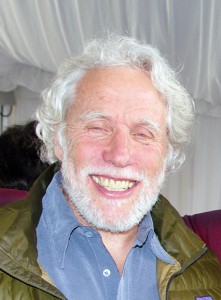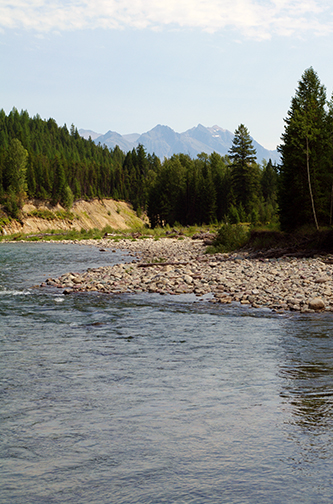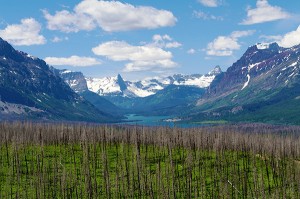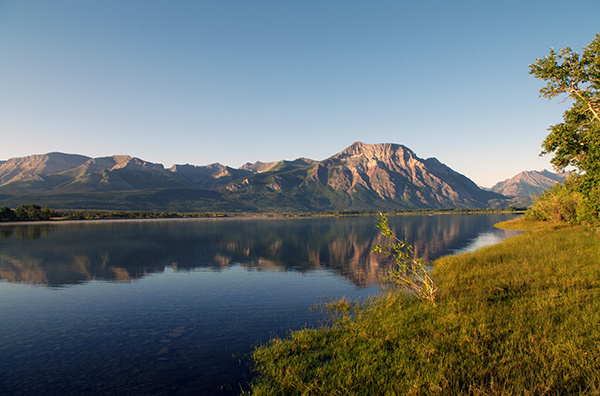Home »

U.S. Senate legislation affecting Flathead River Valley
Achieves mining and energy ban in transnational river valley
 On Dec. 12 the U.S. Senate passed the North Fork Watershed Protection Act as part of a nationwide U.S. public lands legislative package.
On Dec. 12 the U.S. Senate passed the North Fork Watershed Protection Act as part of a nationwide U.S. public lands legislative package.
Canadians have awaited this particular legislation since 2010, when then-governor Brian Schweitzer and then-B.C. Premier Gordon Campbell signed the B.C.-Montana Memorandum of Understanding promising to ban mining and oil and gas development in the entire transnational Flathead watershed.

“Passing this legislation represents a truly significant accomplishment for the B.C.–Montana relationship, and for the health of our shared Waterton-Glacier Peace Park region. It was vitally important for the U.S. government to pass this legislation to balance similar legislation passed in B.C. in 2011 that banned mining and energy development in the transnational Flathead watershed,” says John Bergenske, Wildsight Conservation Director.
Calling the U.S. legislation “historic,” Bergenske added, “We commend Montana Senators Tester and Walsh, and Congressman Steve Daines for working together to find this solution. Now that we have a complementary ban on oil and gas and mining on both sides of the Flathead, we need to have a national park in the Canadian Flathead to match the American one.”

Montana and B.C. had been at odds over appropriate industrial development in the Flathead watershed since 1975, when Rio Algum, Ltd. proposed a mountaintop removal coal mine just six miles north of the international border and the U.S. Glacier National Park. That initial dispute took 13 years to settle, and required the intervention of the International Joint Commission (IJC) that has authority over the Boundary Waters Treaty of 1909 between Canada and the U.S.
The issue died down in 1988 after the IJC issued its final report that recommended that the Rio Algum mine not be permitted. However, the issued flared explosively in 2006 when a B.C.-based mining company proposed opening a mountain top removal mine in exactly the same place.
Sarah Cox, Senior Conservation Program Manager for the Yellowstone to Yukon Conservation Initiative, pointed to the importance of the trans-boundary Flathead for both people and nature. “The Flathead is one of the most biologically important places on our planet. It is vitally important for species that have lost habitat elsewhere, like grizzly bear and wolverine. It’s also home to Waterton-Glacier International Peace Park, the world’s first international Peace Park and a World Heritage Site.”

The decision to ban mining and energy development in the watershed did not come easily. Ultimately, the voices of citizens from both Canada and the U.S. convinced decision-makers of the mutual benefit of conserving the watershed.
“The Flathead is the last unsettled river valley in all of Canada,” observed Peter Wood, Terrestrial Campaigns Director of the Canadian Parks and Wilderness Society – BC Chapter. “In the U.S., it’s widely regarded as the wildest valley remaining in the Lower 48. It has an immense value to people in both countries, and we sincerely commend the political leadership of both Montana and B.C. for acting on the wishes of their citizens, and honoring the trans-boundary agreement.”
 Noting that conservation has been the strongest sustained theme in the history of the Flathead watershed, Bergenske said that both Canada the U.S. have as yet unfinished work ahead of them.
Noting that conservation has been the strongest sustained theme in the history of the Flathead watershed, Bergenske said that both Canada the U.S. have as yet unfinished work ahead of them.
“This bill settles the mining issue once and for all, and that’s hugely significant. But if you look at a map of Waterton-Glacier Park you notice immediately that B.C. does not contribute to the Peace Park or Biological Reserve. In order to conserve this internationally-recognized wildlife corridor, B.C. needs to consent to establishing a national park wilderness reserve in the lower, southeastern one-third of the Flathead watershed.”
 The very first superintendent of Waterton Lakes National Park, George ‘Kootenai’ Brown, observed more than 100 years ago that Waterton needed to expand into the B.C. Flathead.
The very first superintendent of Waterton Lakes National Park, George ‘Kootenai’ Brown, observed more than 100 years ago that Waterton needed to expand into the B.C. Flathead.
Harvey Locke, Strategic Advisor to the Yellowstone to Yukon Conservation Initiative said, “The trans-boundary Flathead is the most important place left for us to protect the full range of North America’s signature biodiversity. It is exceptional by any global standard. This new American law is a great event that highlights that we still have work to do on the Canadian side to mirror the conservation work done on the U.S. side.”

Wildsight







